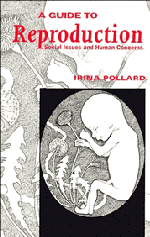Book contents
- Frontmatter
- Contents
- Preface and acknowledgements
- Part one Reproductive biology
- Part two Reproduction and social issues
- 13 Population dynamics, stress and the general theory of adaptation
- 14 Extinctions and the conservation of endangered species
- 15 Artificial control of fertility
- 16 Hormonal contributions to errors of sexual differentiation
- 17 The acquired immunodeficiency syndrome (AIDS) epidemic: a global emergency
- 18 The effect of nutrition and exercise on the hypothalamic–pituitary–gonadal axis
- 19 Principles of teratology and an update on nicotine, ethanol and caffeine abuse
- 20 Ethical aspects of human reproductive biology
- Index
15 - Artificial control of fertility
Published online by Cambridge University Press: 05 June 2012
- Frontmatter
- Contents
- Preface and acknowledgements
- Part one Reproductive biology
- Part two Reproduction and social issues
- 13 Population dynamics, stress and the general theory of adaptation
- 14 Extinctions and the conservation of endangered species
- 15 Artificial control of fertility
- 16 Hormonal contributions to errors of sexual differentiation
- 17 The acquired immunodeficiency syndrome (AIDS) epidemic: a global emergency
- 18 The effect of nutrition and exercise on the hypothalamic–pituitary–gonadal axis
- 19 Principles of teratology and an update on nicotine, ethanol and caffeine abuse
- 20 Ethical aspects of human reproductive biology
- Index
Summary
HISTORICAL PERSPECTIVE
Contraception is not new: for thousands of years people have prevented pregnancy. In early and probably also prehistoric times, a naturally high mortality rate augmented by abortion, infanticide and deliberate pregnancy prevention controlled population size. Early human societies throughout the world developed measures to prevent conception, such as prepubertal coitus, prolonged lactation, delayed marriage, celibacy, withdrawal or various substitutes for ‘natural’ sexual intercourse.
Ancient documents from many different civilizations show a desire to prevent unwanted births. For example, a surviving Chinese medical text written around 2700 BC contains a prescription for an abortifacient. Prescriptions for contraceptives have also been discovered in ancient Egyptian medical papyri. The Kahun Papyrus, dating back to about 1850 BC, gives descriptions for varous vaginal pastes and menses-inducing tampons. The Ebers Papyrus (written about 1550 BC) is particularly interesting as it describes a medicated tampon. It makes use of ground acacia, a plant containing gum arabic that upon fermentation releases lactic acid, a substance recognized as a spermicide and still used today. Indian Sanskrit medical writings likewise refer to tampons, vaginal medications and abstinence. Coitus interruptus, or withdrawal, was probably the oldest effective and most universally used method of birth control in early times. This method is so effective that it is still practiced today, even in the many developed countries. The Talmud, the body of Jewish law and legend from the 2nd through to the 6th centuries AD, advises this particular practice whenever pregnancy would endanger life.
Information
- Type
- Chapter
- Information
- A Guide to ReproductionSocial Issues and Human Concerns, pp. 274 - 306Publisher: Cambridge University PressPrint publication year: 1994
Accessibility standard: Unknown
- 1
- Cited by
